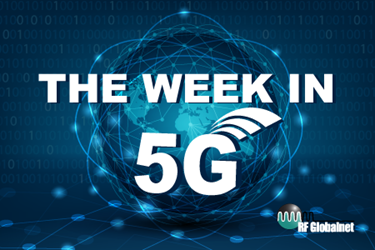The Week in 5G: 8/25/2020 — Weighing 5G Security Strategies; Smart Glasses For First Responders
By Ed Biller

Verizon and smart glasses maker Vizix inked a deal in July to collaborate on 5G-enabled smart glasses that could be used by first responders and public safety agencies. Vizix now says it plans to unveil a commercial version of such a device by January 2021, reports Light Reading contributor Sue Marek.
“Verizon is giving Vuzix access to its 5G First Responder Lab as well as its 5G specialists so that the two companies can develop these 5G-enabled glasses over the next six months,” the report states, noting that Vuzix has been approached by “a number of” wireless firms and is working with other operators in addition to Verizon.
In other technology news, Semiconductor Engineering weighs the pros and cons of using GaN-based power amps versus LDMOS for 5G base stations, arguing GaN is better suited to the higher frequencies while LDMOS is “in the mix” for lower bands. The comparison notes that GaN is more expensive and difficult to fabricate, while LDMOS is both a mature technology an inexpensive.
Meanwhile, Ray Le Maistre of TelecomTV questions the effectiveness of United States’ Clean Network program that designates whose technology is “secure” to use in 5G networks. China’s Huawei and ZTE have been the program’s principal targets, but even chip maker Qualcomm has questioned whether what is billed as a good faith effort actually is hurting the U.S.
“The GSMA, which represents hundreds of mobile operators, and 3GPP, the body responsible for 5G specifications developments, been developing the Network Equipment Security Assurance Scheme (NESAS), an initiative ‘focused on the vendor aspects of the supply chain [that] provides a security assurance framework to improve security levels across the mobile industry. NESAS has been developed following established practices and schemes that provide security assurance,’” reports Le Maistre.
Huawei and ZTE, along with Ericsson and Nokia, have successfully completed an assessment of their product development and lifecycle management processes through NESAS. While this is no absolute guarantee of security, is may represent a more practical security approach, Le Maistre notes, adding that the U.S.’ “current course of action is only likely to reduce the total addressable market of US companies (not expand it), and slow down the pace of technical developments and innovation.”
Related, the U.S. Department of Homeland Security’s Cybersecurity and Infrastructure Security Agency (CISA) has released its strategy to “ensure the security and resilience of 5G technology,” built on three core competencies: risk management, stakeholder engagement, and technical assistance.
Russia has made clear it wishes to work with China and Huawei on 5G, reports China Daily, citing Russian news agency TASS and quoting Russian Foreign Minister Sergei Lavrov as saying "We will definitely not follow the example of the US, who simply demand that everyone not cooperate on 5G with China, in particular with Huawei.”
The report states Huawei already has established R&D centers in Russia and plans to hire more than 1,500 new employees for those centers over then next six years.
Finally, a new chip, described in a paper in Nature Photonics by a team comprising researchers from Osaka University and Nanyang Technological University in Singapore, was able to transmit data at a rate of 11 Gb per second — fast enough to stream 4K high-def video in real time and faster than the promise of 5G, reports SingularityHub, which touts the accomplishment as “a glimpse of our 6G future.”
